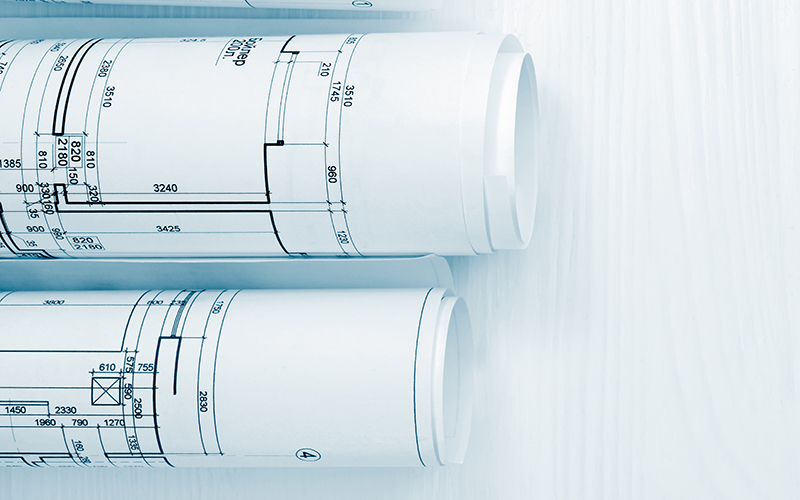
by Brad Emerson
Creating layout concepts for bindery shop floors is one of the greatest opportunities for improving quality, operator efficiency, changeover time and planning for future machine expansions or upgrades.
Advantages to Efficient Shop Floor Layouts
1. Improving Quality
How many times has a bindery manager brainstormed ways to increase the frequency with which personnel perform quality control checks? New floor layouts are the perfect opportunity to reduce the footsteps/effort required to QC products while keeping key personnel at or near their primary workstations. As an extra benefit, a positive morale windfall can occur when key personnel realize their managers are considering the footsteps/effort required in a given shift to make as many good books as possible.
2. Operator Efficiency
Revising machine-manning requirements by looking at the current product mix also can be factored into new floor layouts. A bindery that does short runs may benefit from having an operator that can change over a three knife trimmer/mailtable while another operator is changing the binder or stitcher over to the next job. A shop that does very long runs, or has been able to schedule similar size work to lines, can bring primary operator work stations to within a few steps of each other to reduce redundant personnel.
3. Changeover Time
Once the personnel who work in a layout are taken into consideration, the next advantage can be found in the number of pallets or carts/modules of material that can be staged for subsequent machine changeovers. It did not take long after the installation and start-up of the first automated servo perfect binder in the USA to know that material handling would still play a major role in quick changeovers. While a non-automated machine’s mechanical makeready can be eliminated if scheduling permits the same or similar format jobs to be scheduled behind one another, the physics of moving loads in and out does not go away, even with servo motors, JDF, CIP4, streamfeeders, or bundle loaders. Many efficient binderies take material staging to another level by planning for enough space to keep material near the machine for 16-24 hours of production. This additional product staging can protect a bindery’s overall production backlog when job problems occur and a subsequent job on the schedule can be moved up and made ready quickly.
4. Planning for Expansion
Planning for future machine expansions and upgrades can pay huge dividends when the time is taken to factor in floor space. A quick survey of the customers’ wish lists, bindery personnel input, sales reps, and CSRs for future services such as drilling, inkjet addressing, poly wrapping, semi or fully automatic cartoning, and palletizing also can help bring the bindery’s future into focus.
Considering Layout Concepts
In each layout, it must be determined where the unfinished product enters the bindery and where finished products leave. Machine configuration comes next. Typically, the greatest layout opportunity/variable is the conveyor transfer between the adhesive binder, three-knife trimmer, buffer system, inline hardcover, and poly or cartoning equipment, so careful consideration should be given to this capital expense. The all-inclusive packages from new equipment manufacturers will typically include a conveyor transfer with proprietary components and electrical cabinets that local electricians and mechanics cannot easily troubleshoot. End users considering a domestic conveyor solution with domestic components can benefit with reduced capital expense and gain the ability to service (fix your own bindery) with local mechanics or electricians.
Do your homework when tower conveyors have been placed into a layout concept. While the mesmerizing spiral of books can catch people’s attention, often the initial cost is higher, while tower floorspace savings over waterfall and multi-tier concepts is minimal. In addition, the increased maintenance downtime required for removing stretched chain, the high-end speed limitations, the difficulty with book shingling, and the lack of book access with required OSHA or CE guarding in place can make strong arguments for staying with conventional conveyor components.
Buffer systems technology has evolved quite well in recent years. In the last 50 years, the only technology available to keep a line producing books with feeder faults has been the reject gate (or escape gate) on stitchers, gatherers, and inserters. Now, the buffer system has opened up a whole new profit center, depending on a given plant’s product mix and unit cost. With plc logic, book diversion, stacker, slip torque conveyors, and bookblock feeders, upstream and downstream equipment can continue to run for a few minutes while faults are addressed.
New equipment manufacturers may provide layout assistance with no initial cost. The downside is that these layout concepts can be focused narrowly on the manufacturer’s interest to market complete equipment packages, rather than making end users as competitive as possible with minimal capital expense, and proper consideration for an end user’s product mix.
While in the end bindery personnel can always live with the layout constraints and limitations of less imaginative or motivated bindery man-agers, the technology to make proper layouts and “fight the good fight” against foreign competition is more simple than ever. With proper use of today’s web meeting Internet sites, end users can review numerous layout concepts online, and even exchange mouse control to completely interact with layout specialists.
Brad Emerson is the general manager of fixyourownbindery.com, a company specializing in consultation, turnkey used equipment, automation, equipment fabrication, and training. Emerson’s bindery background includes bindery supervision, as well as marketing and consultation with a global bindery equipment leader. For more information, comments, questions, or criticism, please e-mail brad@fixyourownbindery.com.

